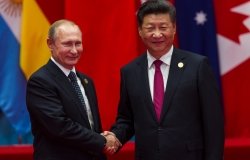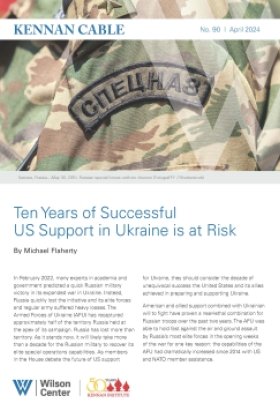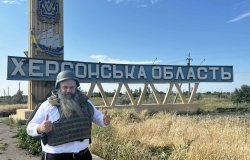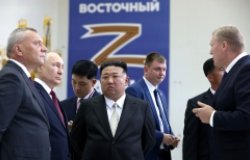How Do They Know? Media, Civil Society, and Informal Communication in Contemporary Ukraine
Adrian Karatnycky, Senior Scholar and Counselor, Freedom House, New York
Overview
In a recent meeting at the Kennan Institute, Adrian Karatnycky, a Senior Scholar and Counselor at Freedom House, discussed the media situation in Ukraine and explained how Ukrainians receive independent information from a variety of sources despite significant state control of media content. Karatnycky noted that while Ukraine possess characteristics of both democracy and authoritarianism, the information blockade imposed by the state limits Ukrainians' ability to find unbiased news. He detailed how state resources, and pressure from oligarchs surrounding President Kuchma contribute to influencing media content and discussed state harassment of television and print media outlets critical of the government. He noted that in its most recent survey of press freedom, Freedom House rates Ukraine's media as "not free."
Karatncyky recalled the recent reports issued by Human Rights Watch, Reporters without Borders and other groups detailing the state's influence and pressure on news content. He cited one report that explained how the presidential administration office instructs the various media outlets about which stories are to be covered and which politicians or stories are to be ignored. He explained that the administration claims that these directives are merely "suggestions" for their own media strategies, but station managers and news directors admit that they have been told that they are expected to cover these stories. Karatnycky contended that despite broadcast media dominance, substantial advantages in print media, and a heavy local influence on radio broadcasting, the pro-presidential political parties have not done well in recent elections. He noted that in the latest parliamentary elections, the opposition parties garnered nearly 170 of the 225 party preference seats in the parliament. Karatnycky argued that these results show that Ukrainians receive their information from sources other than the major media outlets.
According to Karatnycky, results from polls conducted among Ukrainian voters after the latest election revealed several interesting characteristics about Ukrainian voters. First, he continued, most Ukrainians identify their party choices on the basis of the personality that leads the party. Karatnycky explained that Yulia Timoschenko's party garnered much of its support by capitalizing on her popularity. He noted that results also showed that in the case of the communist party, the electorate is attached to the "brand name" of the party rather a personality. Poll results indicate that over 80 percent of those who voted for the communist party planned to do so before the election campaign even began. Karatnycky contended that this is a "static, relatively loyal electorate" compared to other Ukrainian voters. Finally, polling found resentment towards the unbalanced media coverage and saturation of political commercials by some of the parties. He noted that the public's cynical attitude about the media creates an environment where voters are wary of political parties that use major media outlets in their campaigns.
Karatnycky explained that there is a whole range of print media that escape the purview of state pressure and censorship; including publications containing classified ads; some business journals, television guides, handouts, and newspaper leaflets that politicians use as an alternative venue to communicate to voters. He noted that most of these publications are free and have very wide circulations, which, given the high cost of traditional print media, makes them "probably the print media that is most widely accessible to the general population." Karatnycky argued that another alternative means of social communication was the growing role of civil society and non-government organizations. He explained that nearly 5 percent of Ukrainians participate in some association or civic organization. Although this may not seem like a large portion of the population, it does represent nearly 2 million people who are working with some type of civil group. Still another source, was local and national radio, which despite some pressure is not as widely pressured or controlled as private and state television. Another phenomenon, to which he pointed, is the substantial mistrust of the governing elite and their public pronouncements.
Karatnycky concluded that the combination of infrastructure activism and alternative sources of information make it impossible for ruling authorities to ignore the opposition. He noted that the opposition, by law, gets some airtime in election periods, and while ruling authorities have information dominance they can never attain an "information monopoly."
All this means that despite the best efforts of a repressive ruling elite, there are some pockets of independent media in the country.
Hosted By

Kennan Institute
The Kennan Institute is the premier US center for advanced research on Russia and Eurasia and the oldest and largest regional program at the Woodrow Wilson International Center for Scholars. The Kennan Institute is committed to improving American understanding of Russia, Ukraine, Central Asia, the Caucasus, and the surrounding region though research and exchange. Read more
Thank you for your interest in this event. Please send any feedback or questions to our Events staff.










